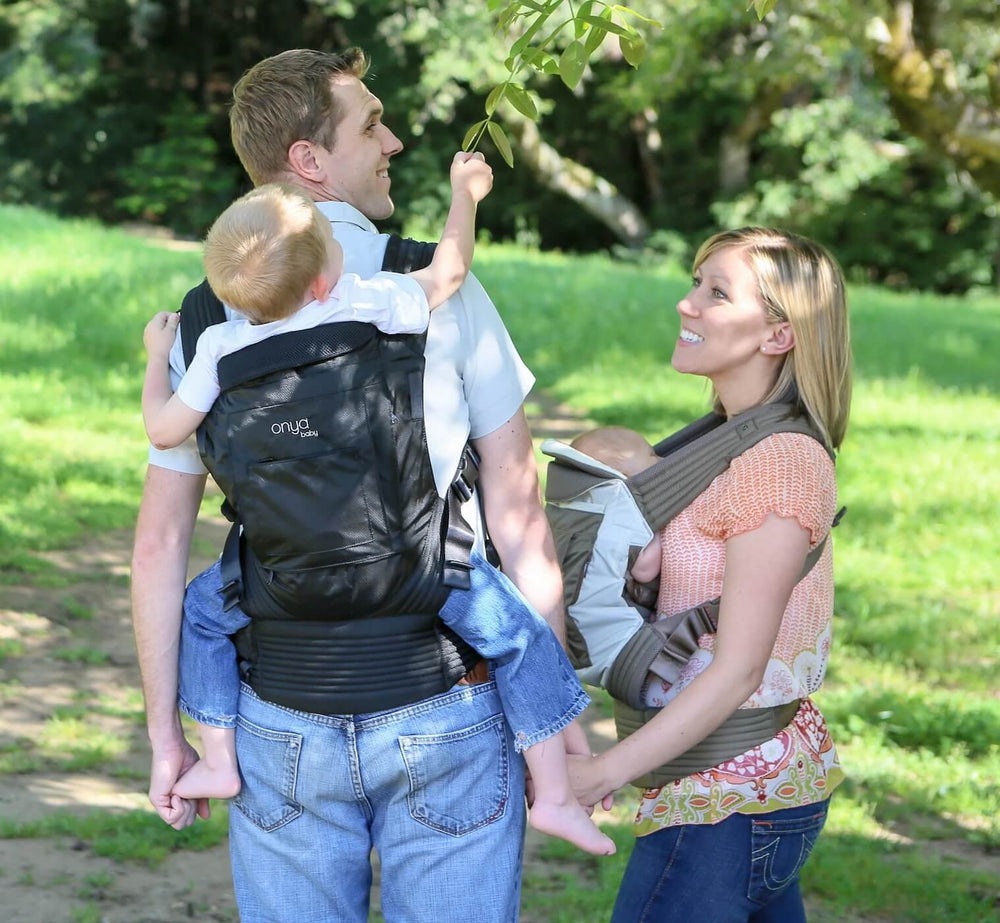Breastfeeding, Babywearing, and Bringing Baby Home
a guest post by Jennifer Pitkin, IBCLC

Congratulations! You have a new baby! Whether it’s your first or your fifth, you’re beginning a long and amazing journey, as unique and individual as both you and your baby. As you begin to learn about your baby, and as your baby begins learns to more about you, keep baby home.
Where is home? Home, for your baby, is where you are. In your arms, on your chest: baby feels safe and secure here, at home.
At home, baby is soothed by the sound of your heartbeat, comforted; they’re kept warm. When issues arise, this is the best place for baby to be. Because issues will arise, and having a new baby can be challenging. Things don’t always go as planned or expected, especially when it comes to breastfeeding.
We’ll talk about a few common breastfeeding issues, and a few remedies you can try at home, when baby is home.
Problem: Pain from an incorrect latch:
- Attempt different feeding positions, including nursing with baby facing you upright in a baby carrier
- Use one hand to compress the breast making it easier for the baby to get a deep latch, which is much more comfortable for you.
- Gently flip baby’s top lip if it isn’t flanged out wide
- Pull down on baby’s lower lip if it isn’t flanged out wide
- Still painful? Break suction and try again. It’s even better if you’re babywearing: your hands are free to compress the breast so baby can latch on deeper
- If baby isn’t high enough, use an infant insert or place a rolled up towel/receiving blanket under baby’s bottom (like this)
Problem: Fussy baby
- Try skin-to-skin (this is great for either parent)
- Swaying or gentle bouncing with baby in a carrier is less tedious work on your arms
- Take a bath with baby
- If Baby is feverish:
- They want nothing else than to be held? Babywearing to the rescue!
- A cool rag on their forehead is great for keeping baby comfortable and cool when they’re hot to the touch
- A small gel ice pack can be placed in the zippered pocket of the baby carrier (like this) or in between parent and baby. Importnant: If you’re placing it between parent and baby, be sure it’s completely wrapped in a cloth to avoid over-cooling.

Problem: You want to increase your supply
- Make sure baby is latched well
- Consider reasons for reduced supply
- Start with skin-to-skin and nurse on demand
- Pump after a nursing session for a few minutes a few times a day
- Massage breasts while nursing and pumping
- Consider galactagogues (milk increasing supplements) after talking with your lactation consultant and physician
Good to know: Growth spurts typically happen around 2-3 days, 2-3 weeks, 3 months, and 6 months
- Growth spurts last a few days
- Baby may cluster feed (eat back to back)
- Baby may be fussier than usual
- Baby will likely eat more often
- Exclusively breastfeeding? Don’t supplement, nurse more. Nursing often helps your body make more milk
- Go about your day with baby strapped on your front so baby can nurse on demand
Most babies and/or older children benefit from increased stability and comfort. If mobility is impaired, babywearing give parents a chance to take their little ones places they may not be able to go otherwise. If there are breastfeeding challenges, hands are free to support the breast and position a little one that needs a little extra help. When a challenge arises, bring baby home first.
About the author:
 Jennifer is an International Board Certified Lactation Consultant in private practice. She has two small children, both breastfed, both often worn in carriers. Jennifer spends free time hiking with her family and kids, usually in their Onyas, checking out the local trails. She is the founder of the Family Friendly Business Initiative.
Jennifer is an International Board Certified Lactation Consultant in private practice. She has two small children, both breastfed, both often worn in carriers. Jennifer spends free time hiking with her family and kids, usually in their Onyas, checking out the local trails. She is the founder of the Family Friendly Business Initiative.








